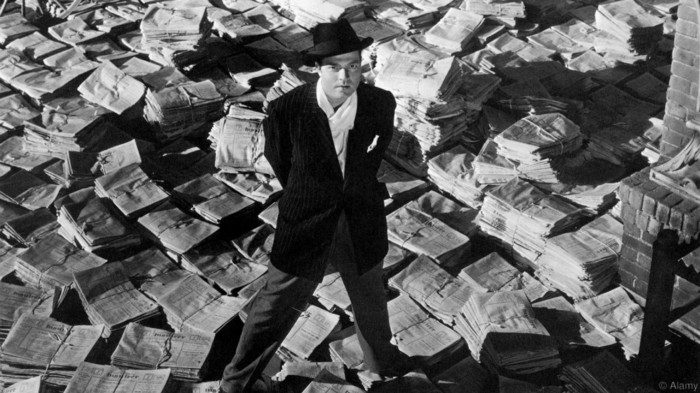
Never before or since has any director made such an impressive feature film debut as Orson Welles with Citizen Kane, made when he was only 25 years old. Despite having no prior experience in filmmaking, Welles was given carte blanche on the production, and he delivered the most original, innovative, and provocative movie of its time. Even today it is considered one of the greatest films ever made, and it is a standard by which all others are judged. According to the great critic Andrew Sarris, “Citizen Kane is still the work which influenced the cinema more profoundly than any American film since Birth of a Nation.”
Welles, a child prodigy who could read at the age of three and was performing Shakespeare’s King Lear by the age of seven, first garnered national fame in 1937 when, at the age of 21, he co-founded the Mercury Theater with John Houseman, a man he later described as “an old enemy of mine.” Welles’s voice was already known on the radio as that of The Shadow, but it was his Halloween night broadcast adaptation of H.G. Wells’s The War of the Worlds in 1939 that really catapulted him to stardom. The broadcast, which was done in the form of news bulletins interrupting regularly scheduled programming, caused mass hysteria and even a few suicides, despite the fact that Welles announced several times during the broadcast that it was merely a dramatization.
As a result of this notoriety, Welles and company were enticed by RKO to come to Hollywood and make a motion picture. Once the project was approved, it was entirely in Welles’s hands. He didn’t even have to show rushes to the executives. Welles brought into the picture members of the Mercury Theater such as actors Joseph Cotten and Agnes Moorehead and composer Bernard Herrmann, all of whom went on to greater fame with other filmmakers such as Alfred Hitchcock. He also worked with veteran screenwriter Herman Mankiewicz, who later sued Welles (unsuccessfully) for not giving Mankiewicz due credit during the film’s promotion, as well as renowned cinematographer Gregg Toland, a favorite of John Ford, who was one of Welles’s biggest influences. Welles later said of Mankiewicz: “He wrote several important scenes. I was very lucky to work with Mankiewicz: everything concerning Rosebud belongs to him. As for me, sincerely, he doesn’t please me very much… I have never had complete confidence in him,” and of Toland: he “is the best director of photography that ever existed.”
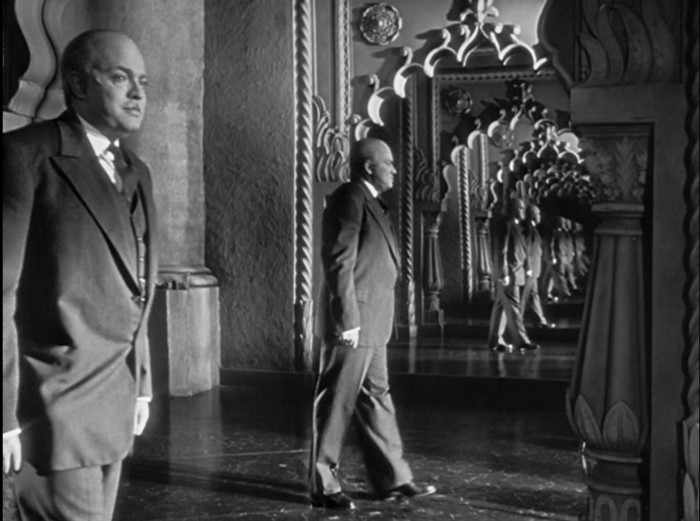
The story of Citizen Kane is a mixture of autobiographical elements from Welles’s own life and scathing satire of William Randolph Hearst, the most powerful newspaper publisher in the world at the time. Probably the most incendiary bit of this satire is the crux of the story, “Rosebud,” which was rumored to be Hearst’s nickname for his mistress’s vagina. As the subject matter of the film became more widely known in Hollywood, controversy grew. At one point, Louis B. Mayer offered the president of RKO the cost of the picture plus a profit if he would destroy the film negative. Luckily, the offer was refused.
Despite the controversy, Kane was not the smashing box office success for which RKO had hoped, which led to the studio ruining Welles’s next feature, The Magnificent Ambersons, by cutting approximately a third of the film in order to make it fit a second feature time slot. Welles would never again have the complete creative freedom he enjoyed with Kane, but he still managed to make a number of excellent films throughout the next three decades, including The Stranger, The Lady from Shanghai, Touch of Evil, The Trial, and F for Fake. He also appeared as an actor in many great films such as The Third Man, Moby Dick, Compulsion, and Catch-22, not to mention Transformers: The Movie and those infamous frozen peas commercials. A storied career, indeed.
Thematically, Citizen Kane has much in common with Howard Hawks and Richard Rosson’s Scarface, as well as Brian De Palma’s 1983 revision of the film starring Al Pacino. Welles was a great admirer of Hawks’s work, particularly his screwball comedies such as Bringing Up Baby, His Girl Friday, and I Was a Male War Bride. In fact, Welles was an uncredited collaborator on War Bride; according to Welles, “the scenarist fell ill and I wrote almost a third of the film.”
Both filmmakers also toyed with the idea of filming Don Quixote; though Welles came much closer to realizing this project, with a posthumously completed version released in 1992, both directors approached it in the same way: as a comedy. As Welles said to Andrew Sarris, “In a certain sense, Quixote is a comedy, and I put a lot of comedy in all my films but it is a genre of comedy that… is understood only by Americans.” Similarly, Hawks said, also in an interview with Sarris, “I once told a Spaniard I was thinking of doing Don Quixote with Cary Grant and Cantinflas, and the Spaniard said it was impossible to make a comedy out of a tragedy. I asked the Spaniard to tell me the story of Don Quixote, and after the Spaniard had done so, I said, ‘You’ve just told me the story of three of Chaplin’s best pictures.’ The only difference between comedy and tragedy is point of view.”
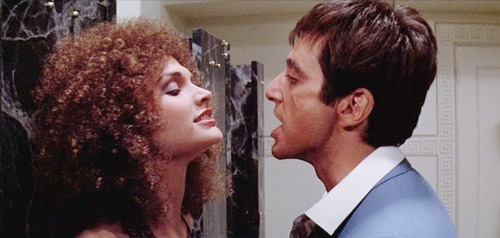
Both Citizen Kane and Scarface are essentially American Dream stories that end tragically. Both Charles Foster Kane and Tony Camonte (Tony Montana in De Palma’s version) build an empire and are ultimately destroyed by the very wealth and power on which they have based their lives. The significant difference between the two characters is that, while Kane inherits his wealth and initially uses it to rebel against his benefactor, Camonte starts with nothing and builds his empire with money he makes by robbing and killing (and of course the sweet, sweet booger-sugar in the 1983 version). In this regard, Camonte is more of a twisted Horatio Alger than Kane, who wishes to do good in the beginning.
One theme that becomes more apparent in DePalma’s version is Tony’s incestuous feelings for his sister, Francesca. When Hawks’s film was released in 1932, the Hays office wouldn’t have allowed more than the subtle hints that do appear in the movie, but 50 years later, De Palma’s Scarface is awash with the sex, profanity, drugs, and violence that are a large part of the everyday lives of the types of people depicted.
Stylistically, Welles and Hawks were somewhat similar, though Welles was certainly much more visually adventurous. When asked about the amazing cinematic innovations of Citizen Kane, Welles replied, “I owe it to my ignorance. If this word seems inadequate to you, replace it with innocence.” Welles simply knew what he wanted to see in any given scene, and he was not about to let conventional wisdom about the capabilities of the equipment of the time stand in his way. “You have to know how not to be timid with the camera,” he has said, “how to do it violence, drive it to its ultimate limits, for it is a base mechanism. Poetry is what counts.”
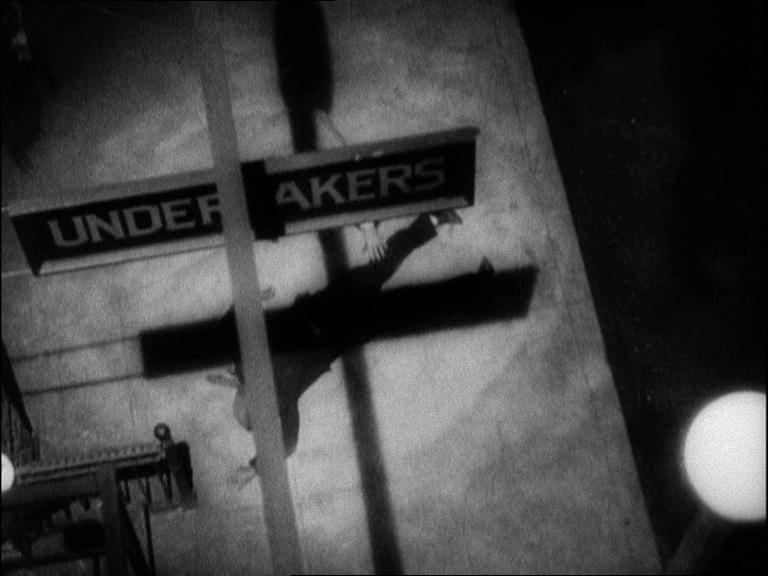
Hawks’s main visual flair in Scarface was an idea that, according to the director himself, “exploited a… little known fact: The [Chicago] papers [of the time] that published the photos of a murder indicated ‘X marks the spot where the body was found.’ So we designed fifteen or twenty scenes around the X, finding all sorts of ways to use the X when a murder occurred.” The first man killed in Scarface falls in the shadow of a street sign, which forms an X. This has also been interpreted as a cross in Bernardo Bertolucci’s The Dreamers, which is interesting because X is the Greek symbol of Christ; hence, “X-mas.” Another notable scene is when Gaffney (Boris Karloff) is gunned down in a bowling alley; as Hawks described it thusly in an interview with Sarris, “As he lets the ball go, he’s hit; the pins all go down. An X for a strike is marked on the scorecard.”
Hawks and Welles shared a distaste for close-ups. Hawks has been quoted as saying, “I try to tell a story as simply as possible, with the camera at eye level… I think a director’s a story-teller, and if he tells a story that people can’t understand, then he shouldn’t be a director.” Welles said of his own camera choices, “Theoretically, I am against close-ups… I find it marvelous that the public may choose, with its eyes, what it wants to see of a shot. I don’t like to force it, and the use of the close-up amounts to forcing it: you can see nothing else. In Kane, for example… there are perhaps six [close-ups] in the whole film.”
Hawks was known for his intentional simplicity. His films are straightforward and highly entertaining, and his shots are mostly medium, eye-level ones. In fact, according to Sarris, this “unyielding eye-level point of view is his distinguishing stylistic characteristic and represents a total commitment to the subjective over the objective. Hawks… stamped his distinctively bitter view of life on adventure, gangster and private-eye melodramas, westerns, musicals and screwball comedies, the genres Americans do best and appreciate least.” In addition to these genres, Hawks also delved into the sci-fi/ horror genre with The Thing from Another World, which he produced and carefully supervised, but on which he was not credited as director. It is this versatility of genre that made him a worthy forerunner of later filmmakers like Stanley Kubrick, who also consistently jumped from genre to genre with equal skill.
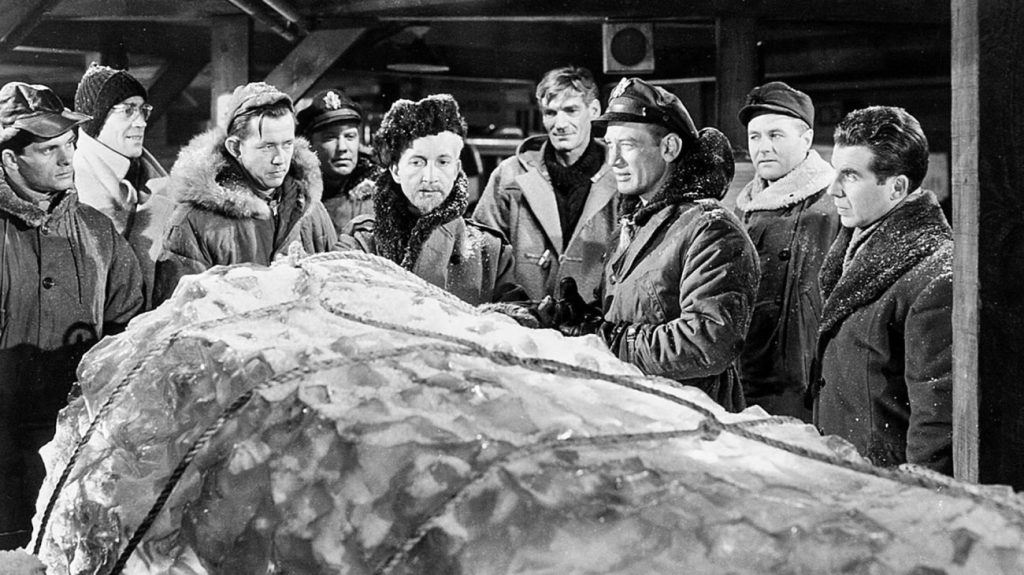
Hawks and Welles were both more appreciated in Europe than in America, though Welles had more of a European sensibility and style anyway. One European who seems to have been influenced by Welles is the French filmmaker Jean Cocteau. Like Welles and Hawks (who was a skilled engineer, pilot, and auto racer), Cocteau was something of a renaissance man, being renowned as a poet and painter as well as a filmmaker. He is, however, best known for his films, and none more than his 1946 adaptation of Beauty and the Beast.
Beauty and the Beast also has much in common with Citizen Kane, both thematically and visually. The Beast is not unlike Charles Foster Kane in that they are both powerful men who live in isolation, in strange palaces of their own design. Both estates have numerous beautiful statues and ornamentation, though the Beast’s are strangely alive. Of course, Kane is a realistic story told in a somewhat heightened style, while Beauty and the Beast is pure fantasy, but with an important theme that has applications in real life. This theme is where the two diverge because, while love saves the Beast from his tragic fate, it is this same love that Kane can never have. Indeed, when his second wife leaves him, he is unable to utter the one phrase that might make her stay; instead of “I love you,” he says, “You can’t do this to me.” This is the basic difference between Kane and the Beast: while the Beast cares only for Beauty, Kane cares only for himself.
Visually, the most striking similarity between the two films is the makeup work. The Beast’s costume and makeup, which took several hours a day to apply and remove, are just as utterly believable as the gradual aging of Charles Foster Kane throughout the film. Also, the scenes inside the Beast’s palace have the same low-key lighting as much of Kane, and Kane himself becomes like a beast when he trashes Susan’s room after she leaves him.

Both Cocteau and Welles seem to have a fascination with mirrors that is shared by many other great filmmakers. In Beauty and the Beast, Beauty is able to travel from the Beast’s palace to her childhood home home in Paris, and back again simply by wishing it while holding a magical mirror given to her by the Beast, thereby learning the fate of her long-lost mother. One of the most beautiful shots in Citizen Kane is that of Kane walking by a series of mirrors which create multiple reflections of him that seem to stretch on into infinity, symbolic of his endless self-absorption. Welles later perfected his mirror technique in the climax of Lady From Shanghai, a famous and often imitated scene quoted in numerous later classics, from Enter the Dragon to the John Wick saga.
Citizen Kane, Scarface, and Beauty and the Beast have all had a wide-reaching influence on the world of cinema, as have the filmmakers behind them. Citizen Kane is widely considered the greatest American film, and Welles the quintessential genius of American cinema. Hawks has been a major inspiration for filmmakers such as De Palma and Quentin Tarantino, the latter of whom credits Hawks as his favorite director. Cocteau’s Beauty and the Beast, while not as widely known in America today, is an obvious influence on the Oscar-winning Disney classic, particularly in the idea of living furnishings and appliances, and was also a major inspiration for one of this reviewer’s favorite cult comedies, Earth Girls Are Easy.
These three classics are essential viewing for any lover of great movies, and each is a fascinating look at the excesses and corruption of absolute power.